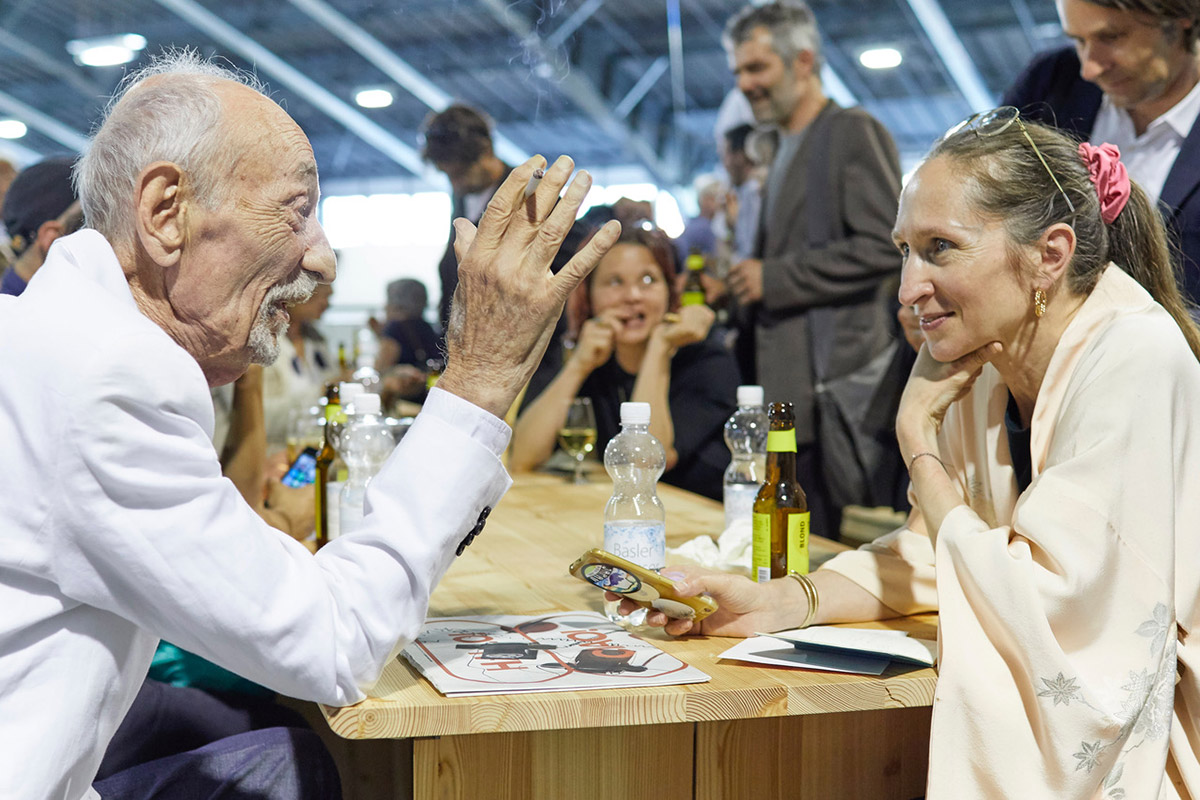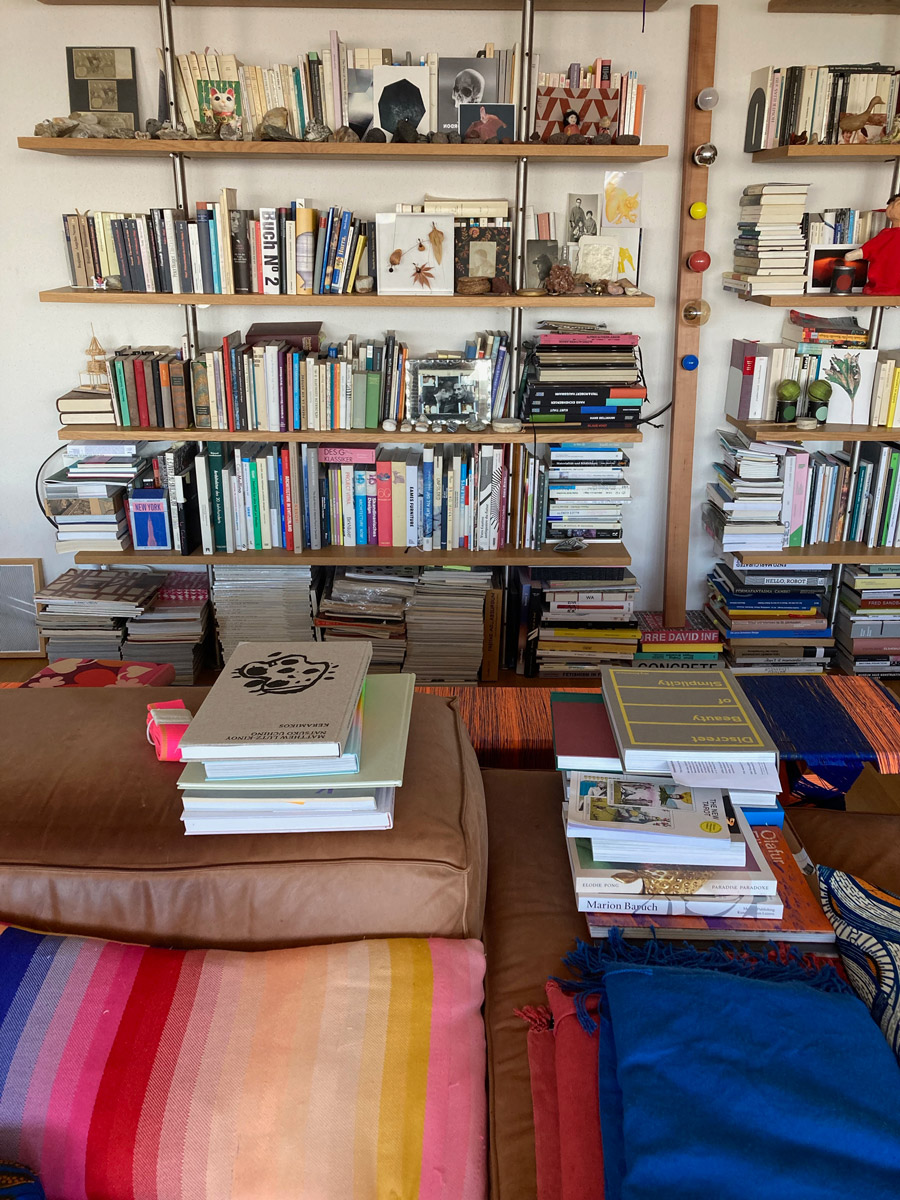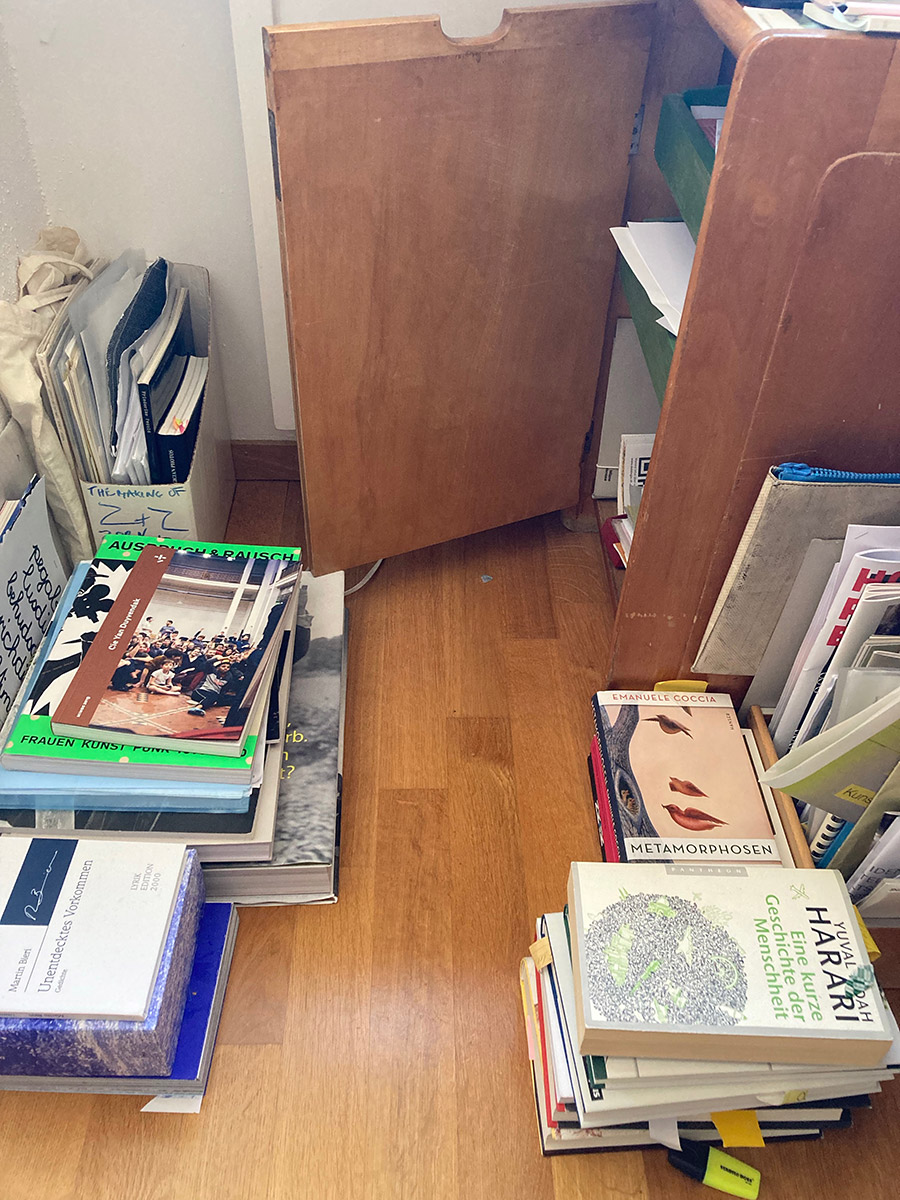22/015
Susanna Koeberle
Journalist / Author / Curator
Zurich

«Independent journalism is unfortunately becoming rarer today.»
«Independent journalism is unfortunately becoming rarer today.»
«Independent journalism is unfortunately becoming rarer today.»
«Independent journalism is unfortunately becoming rarer today.»
«Independent journalism is unfortunately becoming rarer today.»
Please, introduce yourself…
My name is Susanna Koeberle. I have been a freelance journalist, author and curator since 2016. Before that, I worked for eight years as an employee at Archithema Verlag, which publishes magazines in Switzerland (Das Ideale Heim, Umbauen + Renovieren) and Germany (Atrium). I was deputy editor-in-chief for four of those years. This position also entailed tasks that did not coincide with my interests in the long term. I wanted to work more freely and be able to choose topics to work on myself – without pressure from advertisers. This is a reality that strongly shapes the print business in this area, even if many don’t want to admit it. Independent journalism is unfortunately becoming rarer today.
I didn’t study architecture, but German studies, comparative literature, philosophy and art history. However, I was already interested in architecture during my studies. This cultural background also shapes my approach to architectural topics. I am interested in the discipline of architecture as a place where different discourses and contents meet. Architecture is a transdisciplinary matter in which social, scientific and, last but not least, ethical issues manifest themselves alongside aesthetic and artistic ones. The list could be extended. It is precisely this range that I find fascinating.
How did you find your way into the field of architecture and the extended filed of architecture journalism and publishing?
After working as a teacher and lecturer for several years, I realised that this was not the career path I wanted to pursue. I started publishing texts on cultural issues. Through a friend, I heard about the vacancy at an interior magazine and applied. Like so many things in life, it was pure coincidence that I ended up there. I was learning a new profession at 40: writing and editing. It was quite a challenge at the beginning, but also extremely exciting. I learned the most about architecture by going to see buildings with architect friends. On this occasion I also realised that the view of a non-expert can be just as instructive for them. As a comparatist, the dialogue between different disciplines has always interested me. For me, knowledge can only emerge through exchange.
What comes to your mind, when you think about your diploma project? What was it about? Does your diploma still have impact on your current work?
I wrote my final thesis on the reception of Kafka by the French philosopher and writer Maurice Blanchot. My comparative literature studies with Hans-Jost Frey (University of Zurich) had a strong influence on my way of thinking and my view of the world. In terms of content, my thesis no longer has any significance, but I nevertheless recently picked up a book by Blanchot and quoted from it. French modernist philosophy (such as Emmanuel Levinas, Jacques Derrida, Roland Barthes, Michel Foucault, Gilles Deleuze and Félix Guattari) still accompanies me today. I see thinking as a tool for relating things to each other. Even after my studies, it became clear that comparative literature would remain important to me as an approach, although this was not so obvious in my first professional position as a teacher. Since I became a freelancer, the transdisciplinary way of working has become more accentuated.
I recommend reading: The Savage Mind by Claude Lévi-Strauss and Rhizom by Gilles Deleuze/Félix Guattar.
How would you characterize the city you are currently based at as location for practicing architecture communication? How is the context of this specific place influencing your work?
I have lived in Zurich since I was 13 years old. I grew up in Italy, France and Switzerland and moved around a lot as a child. I really appreciate living in this medium-sized Swiss city; Zurich has a lot to offer, also in terms of culture. The ETH Zurich has an international reach, which is good for this rather provincial city. I am grateful that I can live in a country that is privileged in many respects. We are very spoiled. This saturation and lack of empathy for people in need sometimes bothers me. That’s why I like to travel and see other places. Nevertheless, it is important for me to follow the local scene. I see small Switzerland as a big territory and move around a lot within the country. There is also a lot happening in the periphery or at border locations.
What does your desk/working space look like?
I work in my “home office” since before this term was even coined during Corona. For interviews, I can retreat to the bedroom, where I have a second desk. My books have been piling up for months. I urgently need to get a new bookcase. Or clean out. I like working from home. Some of my work takes place away from the office, I’m probably away one or two days a week. Then I take my computer with me and work on the train. I like this nomadic worklife.
For you personally, what is the essence of architecture?
Architecture is a service that can also be art. In the wake of the climate crisis, I think it is important to return to the first function of architecture: Architecture should first and foremost provide protection. And it can contribute a lot to the debates about forms of living together.
Name your favorite …
I cannot provide an exhaustive list of “favorite things”. These changes all the time. But there are texts that have opened my eyes or even led me to change my life. After reading Staying with the Trouble by Donna Haraway, for example, I decided to become a vegetarian. Books like Naomi Klein’s This changes everything were also epiphanies for me.
How do you communicate architecture? Why did you decide to use the specific way of communicating architecture?
As a non-architect, I have a kind of fool’s freedom. But I also notice that there can be something very rigid about architecture. Architects often don’t like it when “amateurs” or people from outside the field get involved. But I am convinced that architecture must become more open to knowledge from other disciplines. The challenges and problems of the present can only be overcome if boundaries are broken down – in every respect. We must learn to think together. That’s why, even as a non-trained architect, I take the right to talk about architecture. I don’t do this by making hasty judgements. Rather, I do so by being prepared to learn something new.
How do you understand the relation of theory/reflection, practice and teaching in architecture?
I think theory is an important tool because processes of change start in the mind. However, the senses are an equally important perceptual tool. And training these skills is usually lost in education. This is where on-site research with students is crucial because it sharpens the perception for what is lived, for reality. After all, buildings for people are the goal of architecture. Rapidly occurring changes such as the current pandemic show how architecture is also a discipline that must react quickly to meet changing conditions. Theory can help to accompany such processes and provide narratives. Ideally, this leads to new patterns of action.
What needs to change in the field of architecture according to you? What are your thoughts on architecture and society?
We have to recognize that architecture can be part of the solution, but it is equally part of the problem. We are currently experiencing a crisis of the idea of progress. We have to think about how we want to grow in the future, or whether growth is still an adequate value for the society of the future. Another challenge is the re-imagining of public space, as it is strongly linked to social issues. The cappuccino urbanism – an expression that refers to “consumerist spaces” under the livable city paradigm that exclude a great many people from the public sphere – a phenomenon which is rampant in many cities is in any case a problematic development that fosters segregation. The role of public space must also be rethought with regard to the friction between digital and physical space.
If there were one skill you could recommend to a young architect to study in depth at architecture school: what would it be and why? What do you want to pass on to the next generation of young architects?
We can already see that the young generation of architects are taking a new look at the subject of space and the environment. The idea of care is also becoming more and more relevant in architecture. In this respect, it seems important to me to open up the field. Architecture is not only about the built space or the landscape, but also about an attitude. This is where the educational institutions can play an important role. In general, it is about sharpening perception, becoming more attentive, listening more closely.
What person/collective or project do we need to look into right now?
Some time ago interviewed the landscape architect Georges Descombes. We realised that we were both interested in anthropological subjects. He recommended that I read the books of Philippe Descola or Baptiste Morizot, both of whom are anthropologists. I found that extremely inspiring. Humans need to redefine their relationship with non-human beings. In this regard, I also find the work of Donna Haraway, Isabelle Stengers or Viciane Despret game changing. Interestingly, these women come from the world of science.
Work
Architectural Writing
«Uns interessiert, wie man Geschichte fortschreiben kann – durchaus auf eine freie Art», Interview with Jürg Conzett and Gianfranco Bronzini, Swiss Architects, 26.06.2022
«Der Landschaftsphilosoph – Georges Descombes», NZZ, 21.09.2022
«Zwei in einem», Umbauen + Renovieren, 12 / 21
«Architektur ist mehr als Rendite», St. Galler Tagblatt, 2 / 20
Website: susannakoeberle.ch
Instagram: @susanna_koeberle
Photo Credits: Intro (Portrait S. Koeberle + Luigi Snozzi, 2018)
Interview: kntxtr, ah + kb, 06/2022

